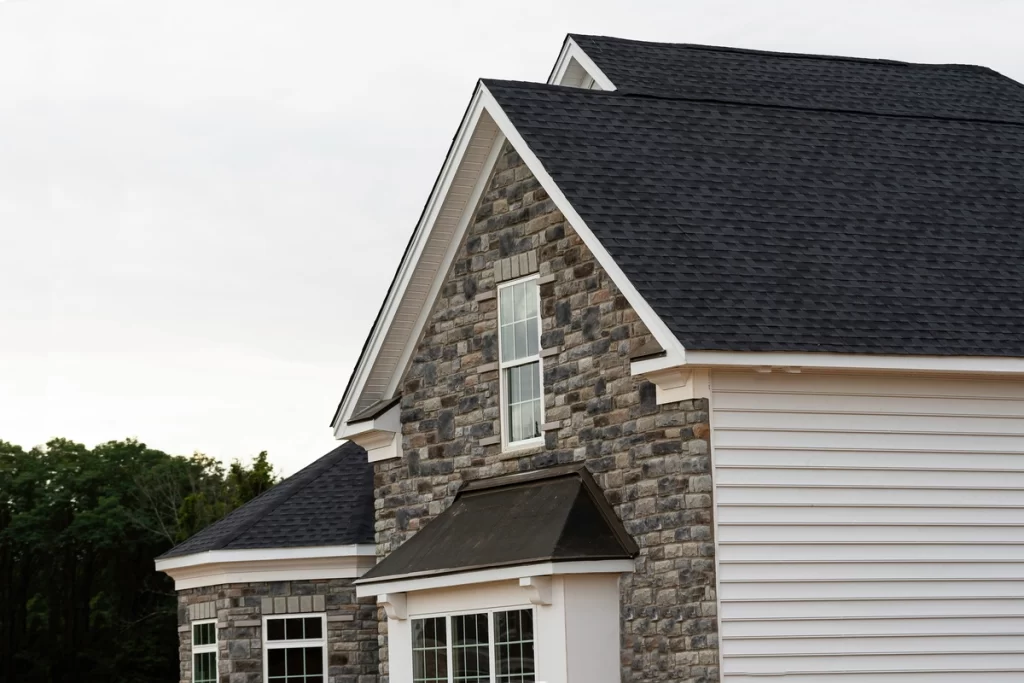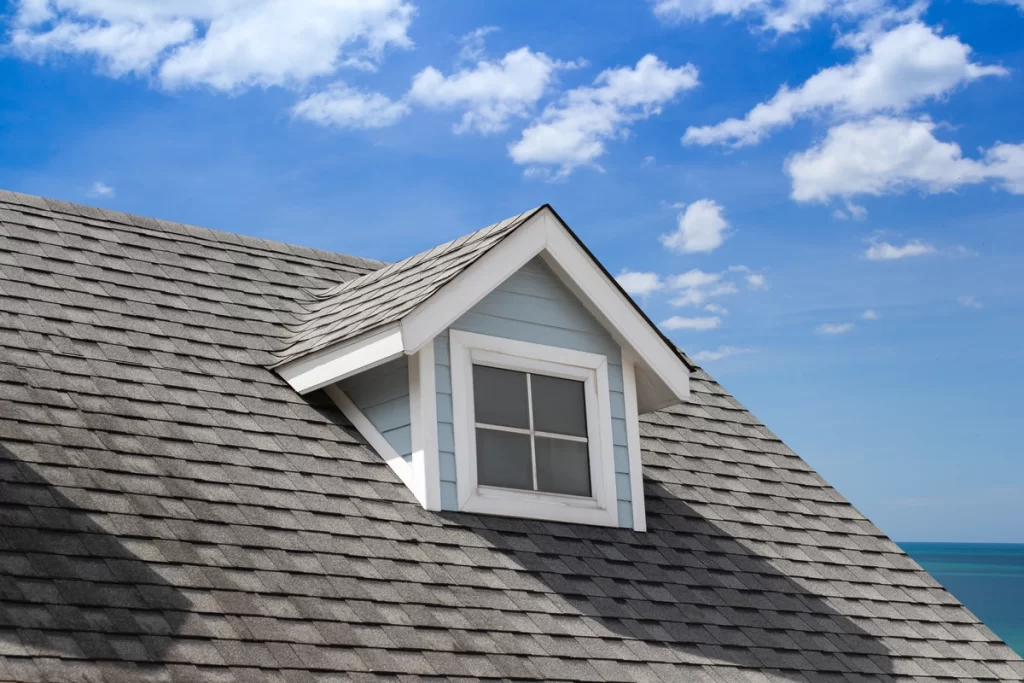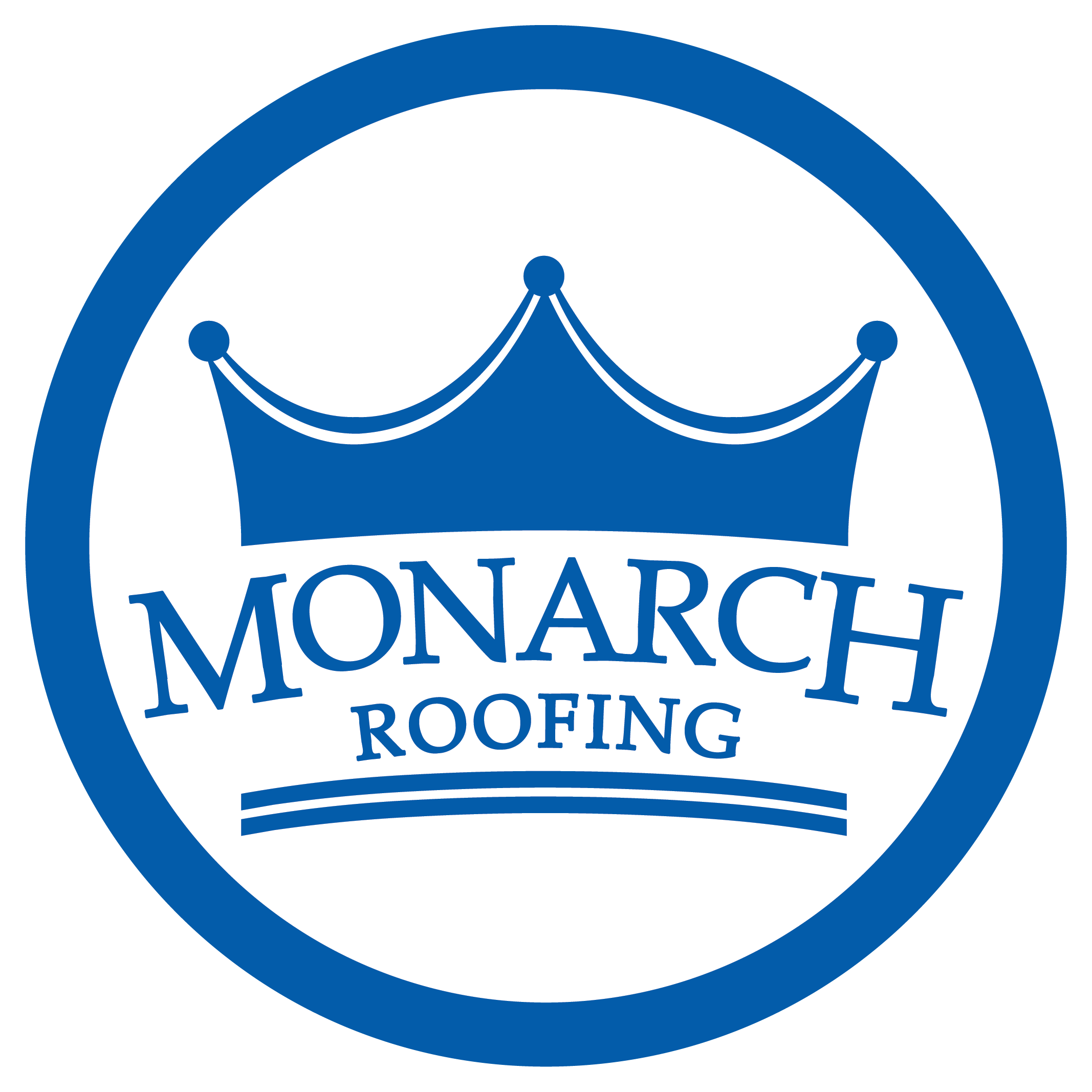You’re not alone if you’ve noticed unsightly black streaks on your roof. Homeowners across the country face this common issue, which can detract from the appearance of your home and raise concerns about potential damage. In this blog post, we’ll explain:
- What causes these black streaks
- How they affect your roof
- What you can do to prevent and remove them
Roof maintenance is crucial for preserving the longevity and appearance of your home. One of the most common issues homeowners encounter is the appearance of black streaks on their roof. These streaks can be perplexing and concerning, but understanding their cause and how to address them can help you maintain your roof’s integrity and aesthetic appeal.
What Causes Black Streaks on Roofs?

Noticing black streaking on your roof? It may be caused by the following:
- Algae Growth: The primary culprit behind those black streaks is a type of algae known as Gloeocapsa magma. This blue-green algae thrives in humid and warm climates, feeding on the limestone filler commonly found in asphalt shingles. When algae colonies grow, they create a dark, streaky appearance on your roof, particularly noticeable on shaded or north-facing sections.
- Mold and Mildew: While Gloeocapsa magma is the most common cause, mold and mildew can also contribute to the problem. These fungi thrive in damp environments and can grow on your roof, adding to the discoloration and potentially causing further damage if left untreated.
- Environmental Factors: Several environmental factors can exacerbate the growth of algae, mold, and mildew on your roof:
- Humidity: High humidity levels provide the moisture necessary for algae and fungi to thrive.
- Shade: Trees and other structures that create shade can contribute to moisture retention, providing an ideal environment for growth.
- Airborne Spores: Algae spores can be carried by the wind or animals, spreading from roof to roof and initiating new colonies.
Effects of Black Streaks on Your Roof
Black roof stains may not seem particularly worrying, but they can make a difference in the effectiveness of your roof in the following ways:
Aesthetic Impact
The most immediate effect of black streaks is the negative impact on your home’s appearance. These streaks can make your roof look dirty and unkempt, reducing your home’s overall curb appeal. For homeowners looking to sell, a streaky roof can be a significant deterrent to potential buyers.
Potential Damage
While the black streaks themselves are primarily an aesthetic issue, they can indicate underlying problems that could lead to more severe damage. Algae, mold, and mildew can retain moisture, which might contribute to the deterioration of your shingles over time. Additionally, prolonged exposure to these organisms can weaken your roof’s structure, leading to costly repairs or even premature roof replacement.
How to Prevent Black Streaks

Keep your roof streak free with these expert prevention tips:
🌱 Algae-Resistant Shingles
One of the most effective ways to prevent black streaks is to install algae-resistant shingles. These shingles are designed with copper or zinc granules embedded in the asphalt, which inhibit the growth of algae. While they may be slightly more expensive upfront, they can save you money in the long run by reducing maintenance and extending the life of your roof.
🗓️ Regular Roof Maintenance
Routine roof maintenance is essential for preventing the growth of algae, mold, and mildew. Here are some tips for keeping your roof clean and streak-free:
- Trim Overhanging Branches: Reducing shade on your roof by trimming tree branches can help decrease moisture retention.
- Clean Gutters: Keeping your gutters clean ensures proper water drainage and reduces the likelihood of moisture buildup on your roof.
- Inspect and Repair: Regularly inspect your roof for damaged or missing shingles and make necessary repairs promptly to prevent water infiltration.
🧰 Install Zinc or Copper Strips
Installing zinc or copper strips along the ridge of your roof can help prevent algae growth. When it rains, small amounts of metal are released, creating an environment that inhibits algae development. These strips are relatively easy to install and can be a cost-effective way to maintain a clean roof.
How to Remove Black Streaks: 3 Steps
If you already have black streaks on your roof, you can try several DIY cleaning solutions to remove them:
- Water and Bleach Solution: Mix one-part bleach with three-parts water and apply it to the affected areas using a garden sprayer. Allow the solution to sit for 15-20 minutes before rinsing it off with a hose. Be sure to protect your plants and landscaping from the bleach solution.
- Commercial Roof Cleaners: There are various commercial roof cleaning products available that are specifically designed to remove algae, mold, and mildew. Follow the manufacturer’s instructions for the best results.
- Gentle Scrubbing: For stubborn streaks, you can gently scrub the affected areas with a soft-bristle brush. Be careful not to damage your shingles in the process.
Professional Roof Cleaning
For a thorough and safe cleaning, consider hiring a professional roof cleaning service. Professionals have the experience and equipment to effectively remove black streaks without damaging your roof. Additionally, they can apply preventive treatments to help keep your roof clean for longer.
Frequently Asked Questions
We’ve gathered all the facts you need to know about caring for asphalt shingle roofs when black streaks appear.
Can black streaks damage my roof?
While the black streaks themselves are primarily an aesthetic issue, they can indicate the presence of algae, mold, or mildew, which can retain moisture and potentially lead to shingle deterioration and roof damage over time.
How often should I clean my roof to prevent black streaks?
The frequency of roof cleaning depends on various factors, including your local climate and the amount of shade on your roof. Generally, cleaning your roof every 1-2 years can help prevent the buildup of algae and other organisms.
Are algae-resistant shingles worth the investment?
Yes, algae-resistant shingles can be worth the investment as they help prevent the growth of algae, reducing maintenance costs and extending the life of your roof.
Can I use a pressure washer to clean my roof?
Using a pressure washer on your roof is not recommended, as the high-pressure water can damage your shingles and reduce their lifespan. It’s best to use gentle cleaning methods or hire a professional roof cleaning service.
What are some natural ways to prevent algae growth on my roof?
Natural ways to prevent algae growth include trimming overhanging branches to reduce shade, maintaining clean gutters for proper water drainage, and installing zinc or copper strips along the ridge of your roof.
A Beautifully Restored Roof By Monarch

Black streaks on your roof can be an eyesore and indicate underlying issues that may affect your roof’s longevity. Whether you choose to tackle the problem with DIY solutions or hire a professional, regular maintenance is key to keeping your roof in top condition.
Don’t wait until your roof is covered in unsightly black streaks! Start protecting your roof today by scheduling a professional roof inspection and cleaning. Our team of experts at Monarch Roofing is here to help you maintain a beautiful and durable roof. Contact us now to book your appointment and keep your home looking its best!





